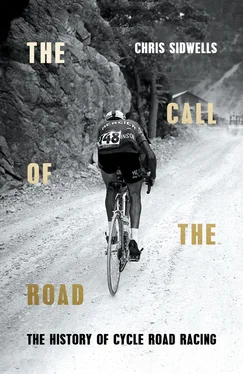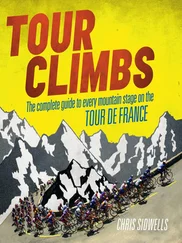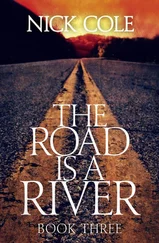France wanted the Vosges back. The mountains were referred to by serious journalists and politicians of the time as ‘the peaks on a blue horizon’, and their return to all-French rule was an object of national desire. Their significance had already been celebrated by a motorbike race between Brest and Belfort, the eastern city that refused to surrender during the Franco-Prussian War. So Desgrange looked to the Vosges, and to its German border, and wondered if a bold statement in that direction might be the grand gesture he needed to help his race.
Desgrange spoke about the mountains to his route planner, a young journalist called Alphonse Steinès: ‘We don’t have to go direct from Paris to Lyons,’ he told Steinès. ‘Instead, why don’t we take a giant side step to the Vosges and run as close to the German border as we can?’
The idea appealed, Steinès was an avid cyclist and great adventurer. He wanted to see if the highest mountain passes could be crossed in a race. After all, some adventurous touring cyclists had done so already. The Vosges weren’t the highest mountains in France, but they would do for now, and his research told Steinès that the ascent of the Ballon d’Alsace ran within metres of the German border. The climb would have huge significance with the French public, making a defiant gesture against the invaders and so helping to focus public attention on the Tour de France for the right reasons.
With the route decided, Desgrange got on with what he did best, influencing opinion with words. In L’Auto he wrote an impassioned ‘advertorial’ for his race: ‘Am I putting my racers in danger?’ he asked. ‘Not only am I asking them to climb a mountain of more than 1,000 metres; I am asking them to do it right under the eye of the enemy.’ To add to the drama perhaps, he also predicted that no rider would climb the Ballon d’Alsace without walking up its steepest pitches.
He was wrong about the last bit, but it was a dramatic claim that increased public interest in the race. And interest was at fever pitch when the 1905 Tour hit the Vosges on stage two, which went from Nancy to Belfort. Six riders reached the bottom of the Ballon d’Alsace together: Hippolyte Aucouturier, Henri Cornet, Louis Trousselier (who was doing military service and only had a 24-hour pass to start the race, so was AWOL), Emile Georget, Lucien Petit-Breton (who was really called Lucien Mazan but raced under an assumed name because his family were wealthy and considered professional cycling beneath them), and René Pottier.
The riders stopped to change to lower gears at the foot of the climb. This involved removing their rear wheels and turning them around to engage the larger of two sprockets, one on each side of the hub. Petit-Breton was distanced because he messed up his wheel change – a tricky operation in the days before quick-release hubs – but the others bent their backs into the slope and made good progress.
The rest stuck together until 4 kilometres from the summit, where Cornet launched an attack and Trousselier was dropped. Cornet went again one kilometre later, this time shaking Georget loose. Then Aucouturier let go, and it was down to two, Cornet and Pottier, with Pottier just managing to get clear and cross the summit first. The press went into raptures. If climbing the Ballon d’Alsace was meant to capture imaginations, the swashbuckling way the best riders did it was even more impressive. One newspaper called Pottier the ‘King of the Mountains’, and the name stuck.
The northern ascent of the Ballon d’Alsace, the one used by the Tour in 1905 and usually since, starts in St Maurice-sur-Moselle, and at the time the German border ran a few metres to the left of the road. That land reverted to France after the First World War, and today the Ballon’s summit is the border of three French regions; Franche-Comté, Alsace and Lorraine, and four départements . There’s a memorial to René Pottier, who took his own life in 1907, close to the summit café, and a clearing in the trees reveals an outstanding 360-degree view over the Vosges, and beyond them to the Alps.
The southern descent of the Ballon d’Alsace is long and quite shallow, but it twists and turns through the trees before levelling out in Giromagny. That’s where Aucouturier finally caught back up to Pottier in 1905, before winning the stage a further 12 kilometres down the road in Belfort.
Once the Tour had conquered the Ballon d’Alsace, the French journalist Philippe Bouvet later wrote, ‘The Tour de France left the hills and entered the mountains, turning from an operetta into an opera.’ Two stages later the race climbed the Col de Laffrey and the Col de Bayard, two outlier passes of the Alps, and public interest for that stage was even more intense.
It started in Grenoble and the climbs were both on the Route Napoléon, now the N85, the main link between Grenoble and Gap. The most common way to make the 105-kilometre journey in 1905 was by stagecoach, which took twelve hours, the coach being pulled by six horses, with four more added for each of the two climbs. The leading Tour riders, Julien Maitron and Hyppolite Aucouturier, covered that part of the stage in four hours, and then they carried on for another 243 kilometres to Toulon, where Aucouturier won.
The Alps had lots of history, lots of mythology, and now here were men, skinny men in knitted shorts and baggy jerseys, riding funny little bicycles where Hannibal marched his elephants, where Romans came to conquer. What’s more, the skinny men were three times faster than a coach and six horses. By taming the mountains, cyclists became heroes. And Louis Trousselier proved to be the biggest hero of all when he ran out the winner of the 1905 Tour de France.
The Tour visited the Ballon d’Alsace again the following year, when René Pottier was once more first to the top, but this time he didn’t pay for his efforts with the tendon injury that forced him to quit on stage three in 1905. Instead he pressed on to win the race. The climb became a regular feature, with Gustave Garrigou storming up it in 1908 in a reported time of 32 minutes, a fantastic record that stood for years.
The Tour de France was a success. It massively boosted the circulation of L’Auto , which quickly outstripped its rival, Le Vélo . News of L’Auto ’s success, and the reasons for it, spread through Europe, and in Italy two newspapers were having a similar battle for circulation to the one between L’Auto and Le Vélo . They were Il Corriere della Sera and La Gazzetta dello Sport. La Gazzetta had the cycling pedigree, having promoted the first editions of the Giro di Lombardia, now called Il Lombardia, in 1905, and the first Milan–San Remo in 1907. Both races were thought up by a Gazzetta journalist called Tullo Morgagni, who lived in Milan.
The first edition of the Giro di Lombardia was actually called Milan–Milan and billed as a revenge match between Milanese cyclist Pierino Albini and Giovanni Cuniolo. The ‘revenge’ coming from the fact that Cuniolo had beaten Albini in a short-lived but once important race called the Italian King’s Cup. Milan–Milan went north and along the fringes of the Italian lake district, in which the race is run today, then returned to Milan. The route was mainly flat but the road surfaces were appalling. They were so bad in places that where there were railway lines running alongside the roads, riders stopped, lifted their bikes onto the bed between rail-tracks and continued riding there because it was smoother.
Marginal gains is a phrase bandied about in cycling now to describe the search for advantages, no matter how slight. Well, the winner of the first Giro di Lombardia, Giovanni Gerbi, was a ‘marginal gains’ guy, although back then it was just called being crafty. He went round the route in the week before the race, building little earth ramps next to the rails where there was a really bad stretch of road, and in the race he used the mounds, which only he knew about, to cross over the rails and ride on the rail bed without dismounting.
Читать дальше












